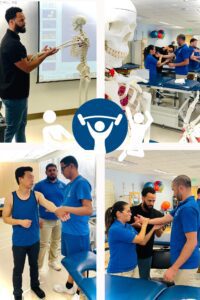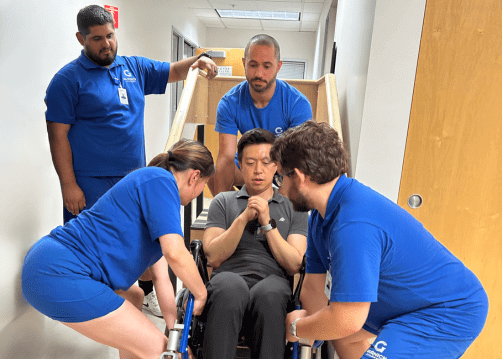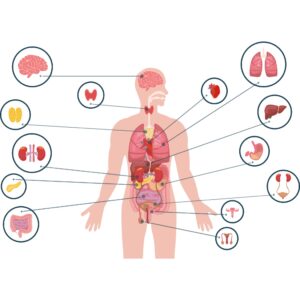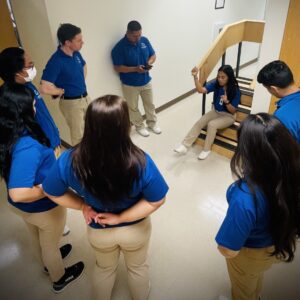3 Reasons Why You Need A&P For Your PTA Career
Date: October 18, 2023
If you opened your lips to drink your morning Joe rather than close them, you already understand something regarding muscles. Likewise, if you moved your shoulder to help hold that hot drink, you have a basic anatomical knowledge of ball and socket joints. Moreover, if you recognize that soft tissue responds and remodels along imposed demands,1 your physiological acumen astounds. Therefore, raise that coffee in a toast!
Furthermore, if you’re familiar with the physiological principle that soft tissues heal according to how they are mechanically stressed,2 you’ll likely be a good Physical Therapy Assistant (PTA).
How Physical Therapy Works
By and large, understanding how and why the body responds to certain stimuli or the ability to predict its reactions to outside stressors is vital to how physical therapy works. Notably, to be successful in any PTA program, prospective students need a fundamental grasp of A&P principles.
Briefly speaking, a good A&P course introduces students to bodily systems. Additionally, it provides an overview of basic medical terminology and the impact of diseases on the body.3 For this reason, let’s break down the two components of the course. In brief, they are anatomy and physiology.
-
-
- Anatomy: As a branch of biology and medicine, anatomy identifies and describes structures of living things. People who study anatomy learn about the body, how it is made up, and how it works.4 Moreover, anatomy is an old science concerned explicitly with the structure of organisms and their parts or portions. In brief, it is a natural science dealing with the structural organization of living things.5
- Physiology: Physiology studies functions and mechanisms in a living system.6 Within human beings, these include the endocrine, reproductive, immune, urinary, integumentary, nervous, musculoskeletal, circulatory, respiratory, and gastrointestinal systems.7 By and large, physiology tests how organs and systems work within the body, how they communicate, and how they combine their efforts to make conditions favorable for survival.8
-

Why is A&P Needed As a Prerequisite?
 To Accurately Assess and Treat Patients
To Accurately Assess and Treat Patients
Firstly, PT assistants deliver care and provide treatment for mobility issues, injuries, and disabilities while under the supervision of physical therapists. Moreover, applying sound A&P principles is crucial. While lacking knowledge of anatomical structures and their relationships is equally disastrous to medical personnel.
For instance, if a PTA cannot accurately measure the range of motion and understand the normal physiological range in an injured ankle, asking a patient to extend it beyond a safe range could cause irreparable damage. Similarly, having a comprehension of muscular anatomy enables PTAs to identify weak or shortened muscles. Thus they may inform regarding appropriate comfortable strengthening or stretching exercises. Overall, A&P knowledge allows PTAs to make informed decisions aiding anatomically informed patient care.
 To Understand How the Body Heals
To Understand How the Body Heals
Secondly, physiology is indispensable for comprehending treatment types. By and large, physiology explains the mechanisms behind movements, strength development, tissue healing, and pain modulation. I.e., if treating a sprain, a PTA trained in proper physiology will not only understand RICE (rest, ice, compression, and elevation), but they will also know the physiological body systems at play.
-
-
- Rest—to do with the circulatory system and regulating blood flow to the injured area.
- Ice—decreasing the propagation of nociceptive neural stimuli to the brain, reducing pain and muscle spasms.9
- Compression—to contain injury and prevent further swelling.
- Elevation—“increasing venous return to the systemic circulation, and reducing hydrostatic pressure, thereby reducing oedema and facilitating waste removal from the injury.”10
-
 To Aid in Carrying Out Safe Patient Exercises
To Aid in Carrying Out Safe Patient Exercises
Thirdly, physiology basics aid PTAs in carrying out prescriptions for safe, rehabilitative exercises for patients. I.e., understanding how the cardiovascular system functions helps a PTA professional monitor a patient’s vital signs during therapeutic exercises. Moreover, this goes far to ensure patient safety. Alternatively, allowing patients with cardiac pathologies to exercise beyond safe parameters could be fatal.
While it goes without saying, a comprehensive understanding of the musculoskeletal system aids in designing exercises corresponding to specific muscle groups’ exertion capacity.
I.e., If a PTA is unaware that the pectoralis major, latissimus dorsi, deltoid, and rotator cuff muscles connect to the humerus and move the arm,11 he or she might accidentally begin exercises on a patient’s tibialis posterior. (Notably, this is an area that supports the foot’s arch rather than the upper arm.) Likewise, PTAs who understand how the nervous system operates may safely administer exercises that do no further harm or pose conditions affecting the nervous system. Namely this is especially important for patients suffering from nerve damage.
Conclusion
Moreover, A&P basics help PTAs tailor treatments that maximize safe patient outcomes. In short, a solid anatomy and physiology footing is “theory to the practice.” Much like a foundation for building a house, A&P is not a class to try to shortcut or petition to skip. Instead, it is one of the most essential prerequisite credits a future PTA may take.
About Our Program
Gurnick Academy’s Physical Therapist Assistant (A.S. in PTA) Program offers students unique learning opportunities within an accelerated curriculum. Moreover, future PTAs must complete didactic and clinical coursework within an official program. They should be licensed, certified, or registered to work in most states.12
Finishing said program allows graduates to be eligible to take the National Physical Therapy Exam (NPTE) for PTAs and the California Law Exam (CLE). After successfully passing these exams, the student will be licensed to practice in California.
Check out our PTA program here. ~
Citations
1 “An Introduction to Myofascial Rolling.” NASM.org, National Academy of Sports Medicine (NASM). (Accessed Sept. 29, 2023.)
2 Davis’s law. July 22, 2023. In Wikipedia. (Accessed Sept. 28, 2023.)
3 Gleason, Brandy. “What Are the Prerequisites for Nursing School?|NurseJournal.org.” NurseJournal. July 15, 2021. (Accessed Sept. 25, 2023.)
4 Brazier, Yvette. “Anatomy: What Is It and Why Is It Important?” medicalnewstoday.com. Nov. 29, 2020. (Accessed Oct. 2, 2023.)
5 Anatomy. (September 22, 2023). In Wikipedia. en.wikipedia.org/wiki/anatomy. (Accessed Oct. 2, 2023.)
6 Physiology. (August 28, 2023). In Wikipedia. en.wikipedia.org/wiki/physiology. (Accessed Oct. 2, 2023.)
7 “What Is Physiology?”Sciencexplorers. May 1, 2020. (Accessed Oct. 2, 2023.)
8 Newman, Tim. “Introduction to Physiology: History, Biological Systems, and Branches.” medicalnewstoday.com. Oct. 13, 2017. (Accessed Oct. 2, 2023.)
9 Järvinen TA, Järvinen TL, Kääriäinen M, Aärimaa V, Vaittinen S, Kalimo H, Järvinen M, Muscle Injuries: Optimising Recovery, Best Pract Res Clin Rheumatol. 2007 Apr;21(2):317-31. (Accessed Oct. 2, 2023.)
10 “RICE.” Physiopedia. www.physio-pedia.com/RICE_Note-3. (Accessed Oct. 2, 2023.)
11 “Muscles of the Upper Extremity|SEER Training.” Training.seer.cancer.gov. National Cancer Institute. (Accessed Oct. 2, 2023.)
12 American Physical Therapy Association. “Becoming a Physical Therapist Assistant.” APTA. (Accessed Oct. 2, 2023.)







